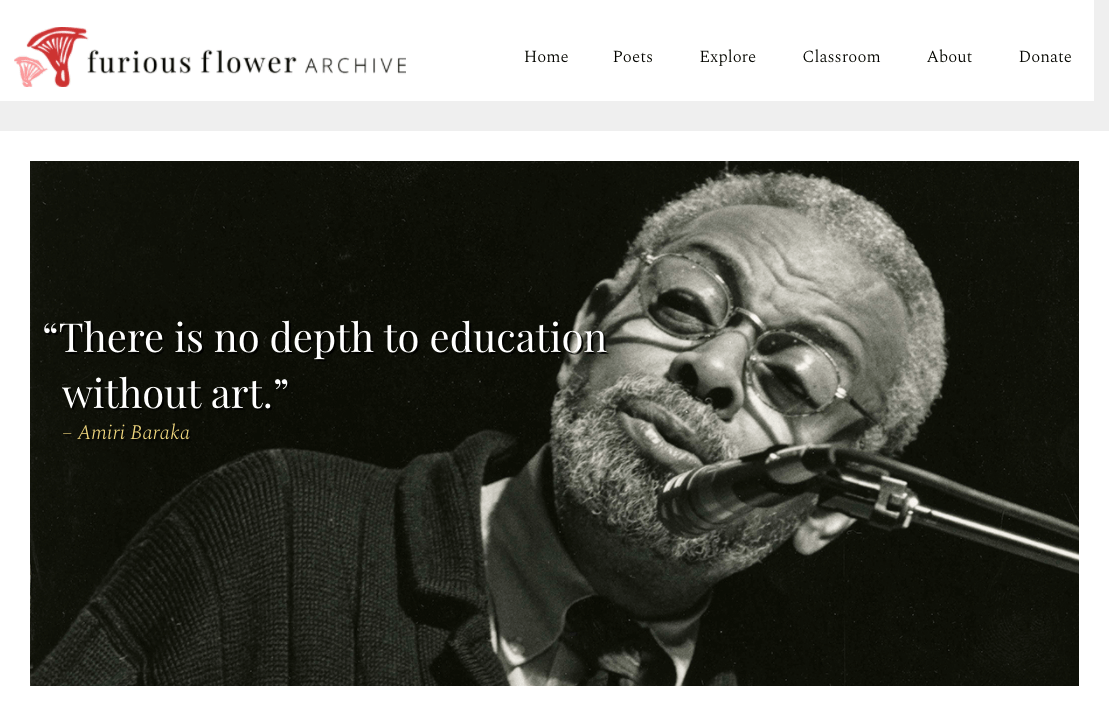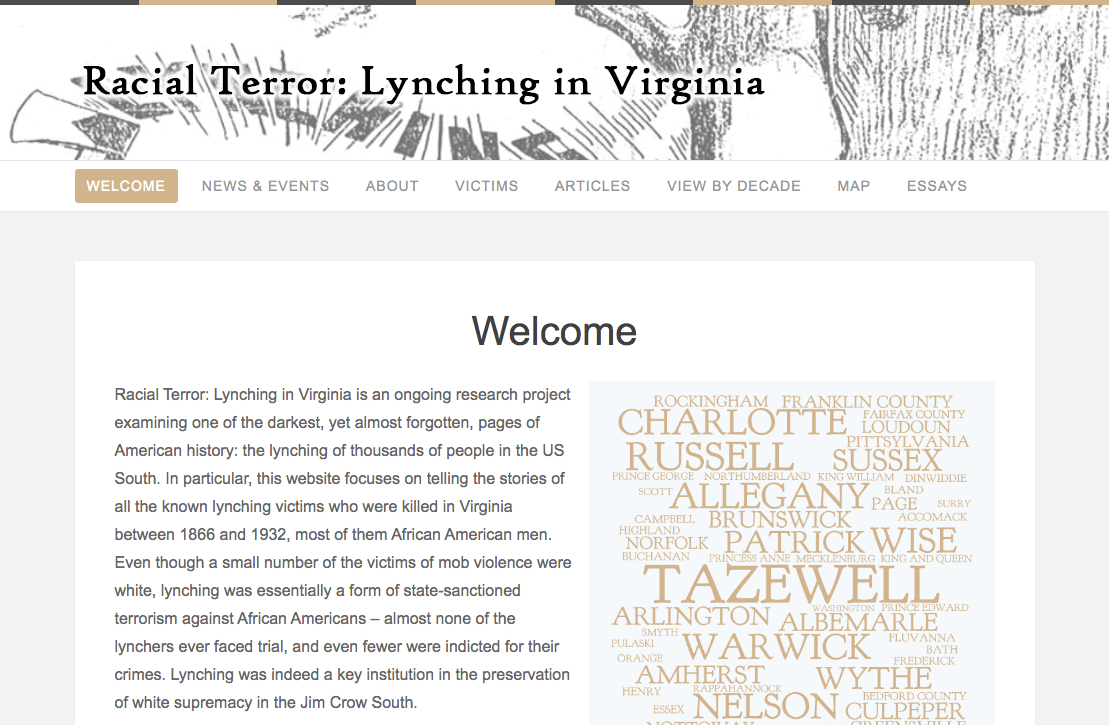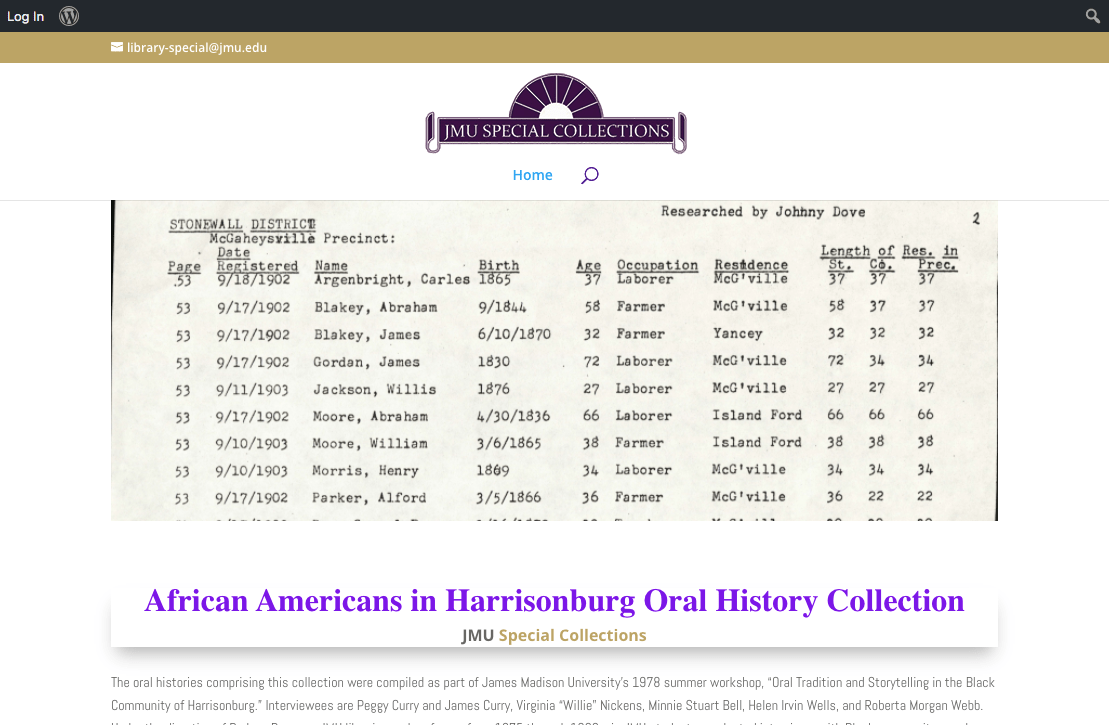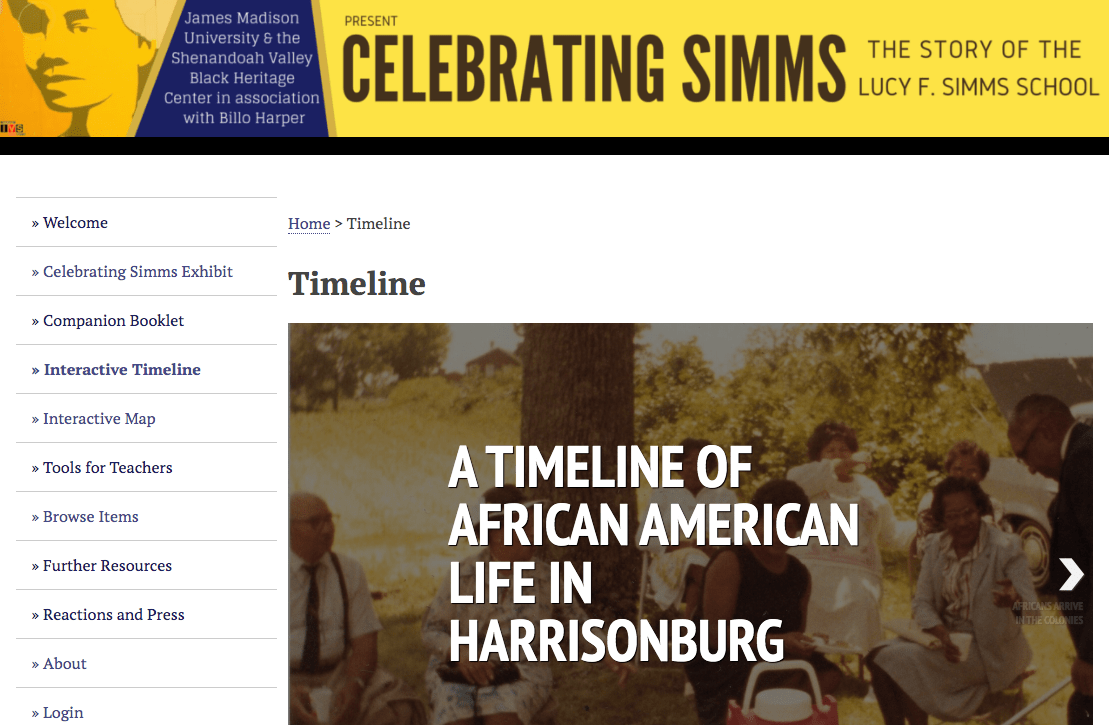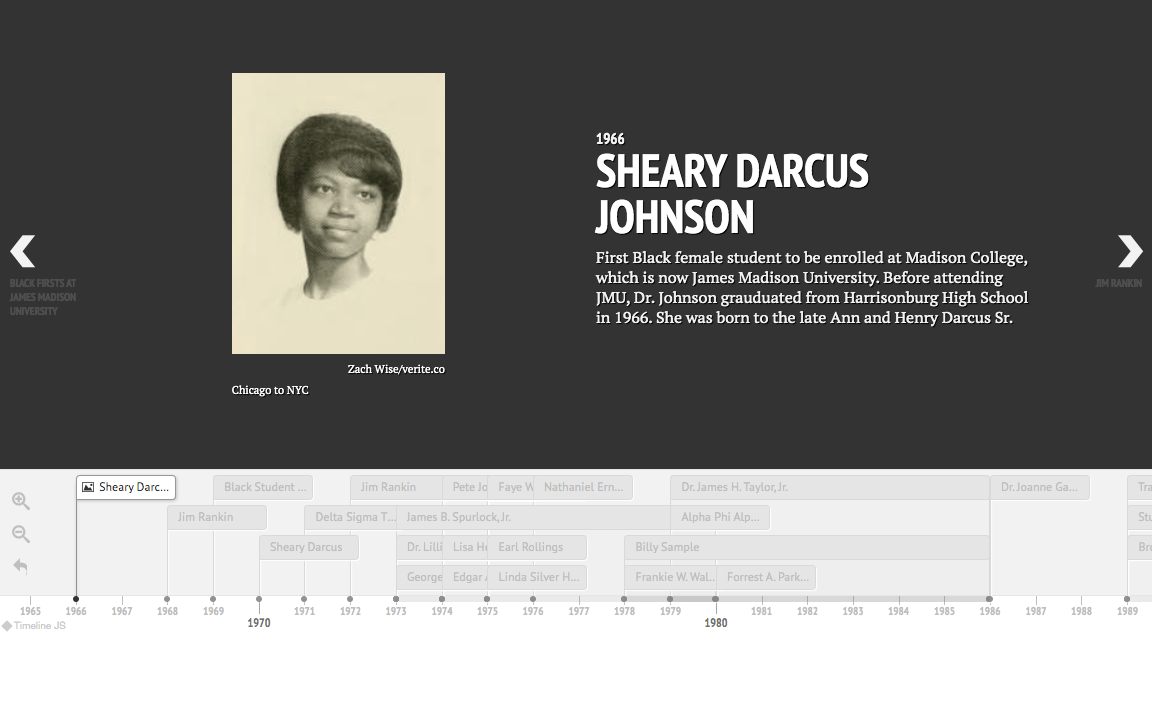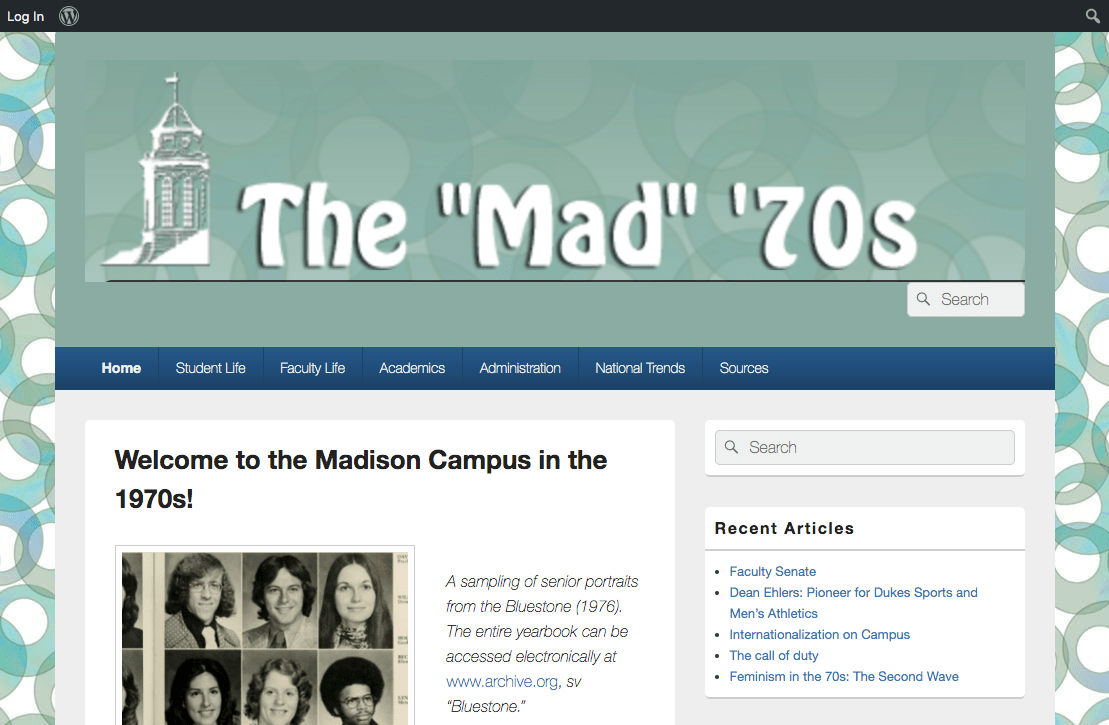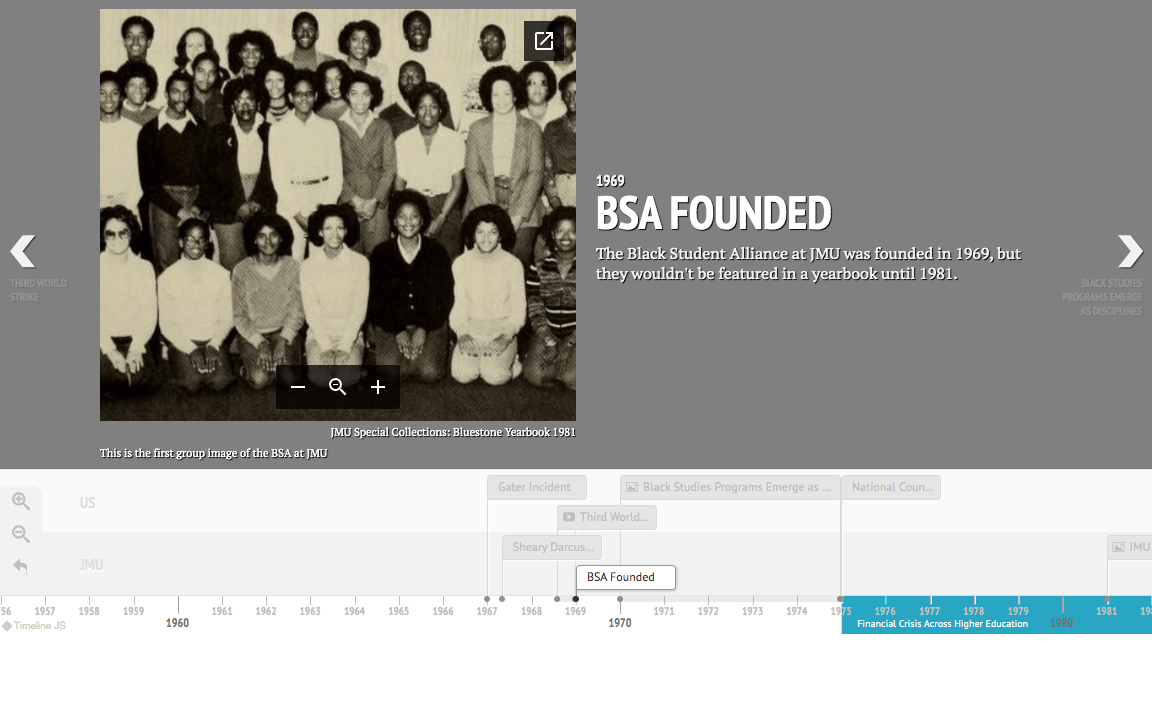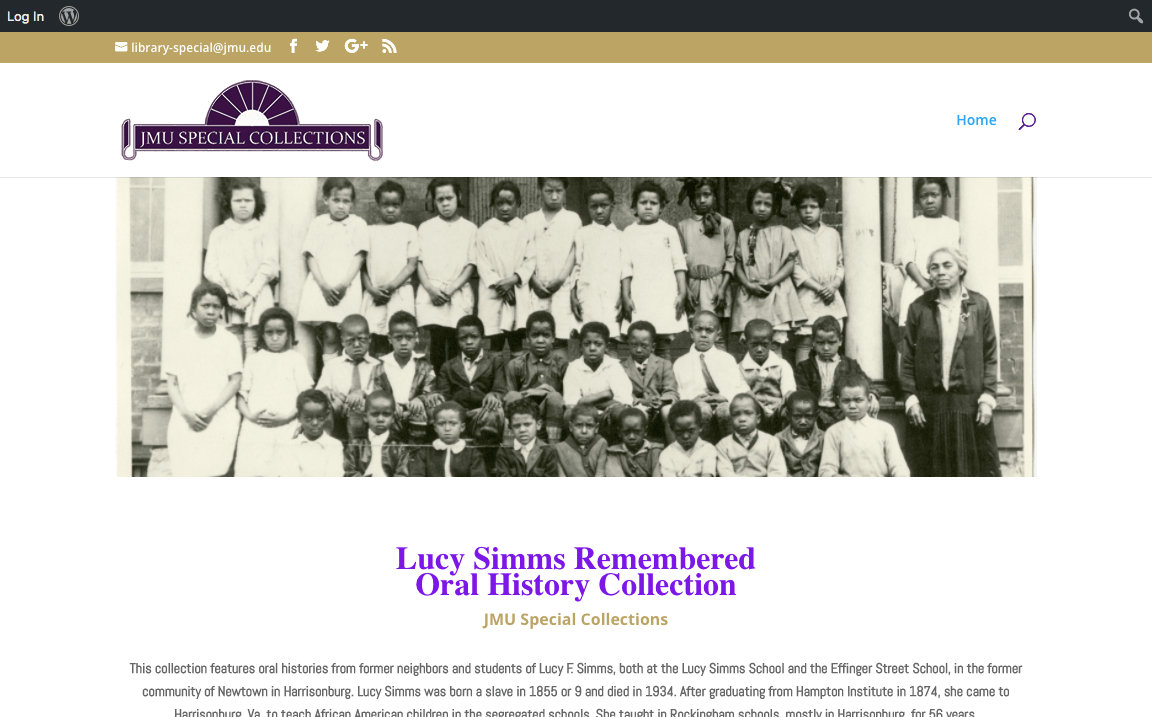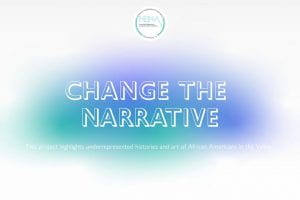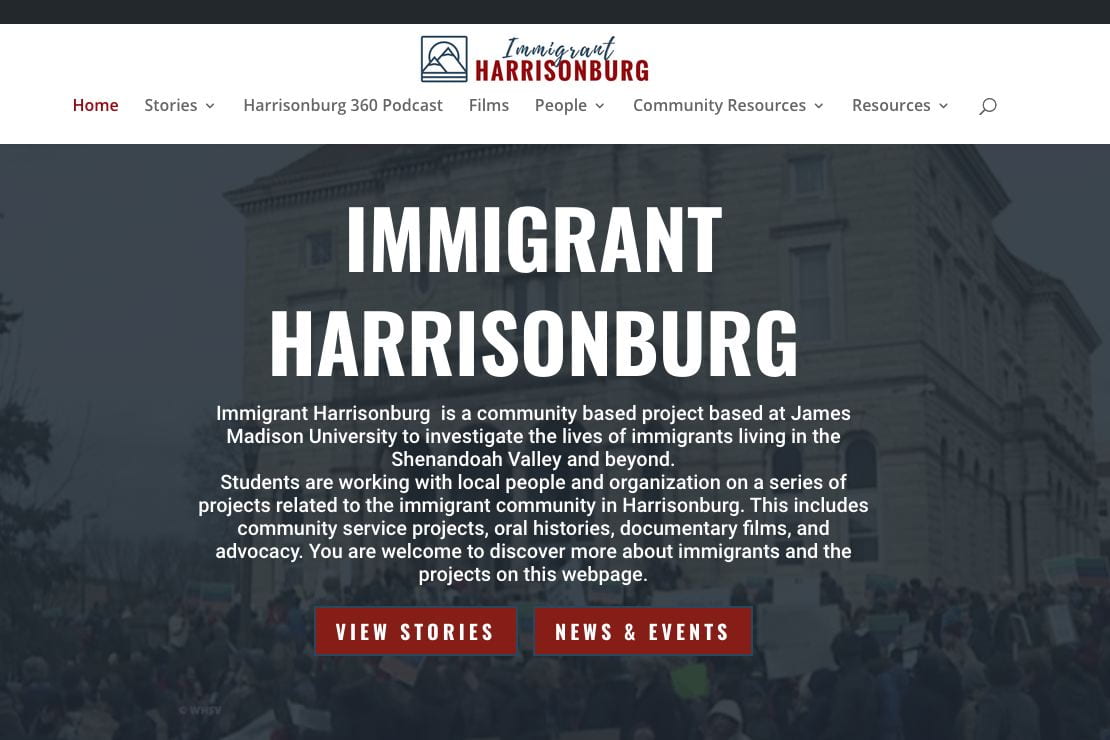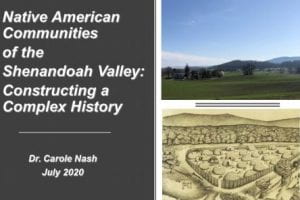Digital Resources
James Madison University remains committed to undergraduate and graduate research. Many of the digital resources below are examples of student scholarship completed under the direction of faculty and staff. These resources provide important examples of comprehensive and scholarly research projects that are critical to developing an informed understanding of the racialized and gendered history of the university and the surrounding community.
JMU’s Campus History Committee, tasked with mapping the university’s commemorative landscape, will provide recommendations for (re)naming buildings and other spaces as an act of reconciliation. Many of the individuals discussed in these resources provide potential options for honorific namings at the university.
Please note: As you explore some of these digital resources and exhibits—which draw heavily from historical documents—you will encounter examples of racist and oppressive imagery and language.
Furious Flower Archive
During the Spring 2019 semester, students from six majors worked with professors from four disciplines and library specialists to begin the work of building an online repository for this digital archive.
Go to the website »
Racial Terror: Lynching in Virginia
Racial Terror: Lynching in Virginia is an ongoing research project examining one of the darkest, yet almost forgotten, pages of American history: the lynching of thousands of people in the US South.
Go to the website »
African Americans in Harrisonburg Oral Histories
The oral histories comprising this collection were compiled as part of James Madison University’s 1978 summer workshop, “Oral Tradition and Storytelling in the Black Community of Harrisonburg.”
Go to the website »
Celebrating Simms
This website is the online companion to the permanent exhibition that celebrates the life of pioneering African-American educator, Lucy F. Simms, and the school named in her honor.
Go to the website »
Black Firsts at James Madison
Created by undergraduate students Zaria Heyward and Qyaira Colbert in the course “Black Studies, Black Spaces” (Fall 2019), this interactive timeline documents the numerous accomplishments of Black trailblazers in JMU’s history.
Go to the website »
Madison in the 1970s
This site explores what everyday life was like on this campus during a pivotal era. Among other things, the decade witnessed struggles over school desegregation, affirmative action, and Women’s Liberation.
Go to the website »
Black & White on Bluestone Hill
This exhibit explores the complex and often fraught history of black and white race relations at JMU. From the school’s founding as the State Normal and Industrial School for (white) Women in 1908, to its integration in 1966, and to its official designation as James Madison University in 1977, “Bluestone Hill” has and continues to be a staging ground for the challenges of diversity and inclusion.
Go to the website »
Black Studies at JMU
Created by graduate students Marina Shafik and Megan Medeiros in the course, “Black Studies, Black Archives, and the Black Digital Humanities” (Spring 2020), this interactive timeline compares the rise of Black Studies at JMU to the rise of Black Studies nationally.
Go to the website »
Lucy Simms Remembered
Oral History Collection
This collection features oral histories from former neighbors and students of Lucy F. Simms, both at the Lucy Simms School and the Effinger Street School, in the former community of Newtown in Harrisonburg. Lucy Simms was born a slave in 1855 or 9 and died in 1934.
Go to the website »
Change the Narrative
How can the visual arts intervene in changing national narratives invested in historical amnesia? The W.K. Kellogg Foundation and Virginia Humanities Foundation support projects that aim for truth, racial healing and transformation, including Harrisonburg’s Truth, Racial Healing, and Transformation (TRHT) project. Led by activists and artists Steven Thomas and Susan Zurbrigg, the Harrisonburg TRHT has organized students, faculty, and community members in retrieving and remembering local histories of African Americans in the Shenandoah Valley.
Go to the website »
Immigrant Harrisonburg
Immigrant Harrisonburg is a community-based project that seeks to investigate the lives of immigrants living in the Shenandoah Valley and beyond. JMU students are working with local people and organizations on a series of projects ranging from oral histories and documentary films to community service and advocacy projects.
Go to the website »
Native American Communities of the Shenandoah Valley
This document is intended to raise awareness of the long history of Native Americans in the Shenandoah Valley. It is part of a larger project to create formal statements of land acknowledgement honoring Indigenous peoples whose history is tied to the areas where modern institutions like colleges and universities are located.
Go to the website »

